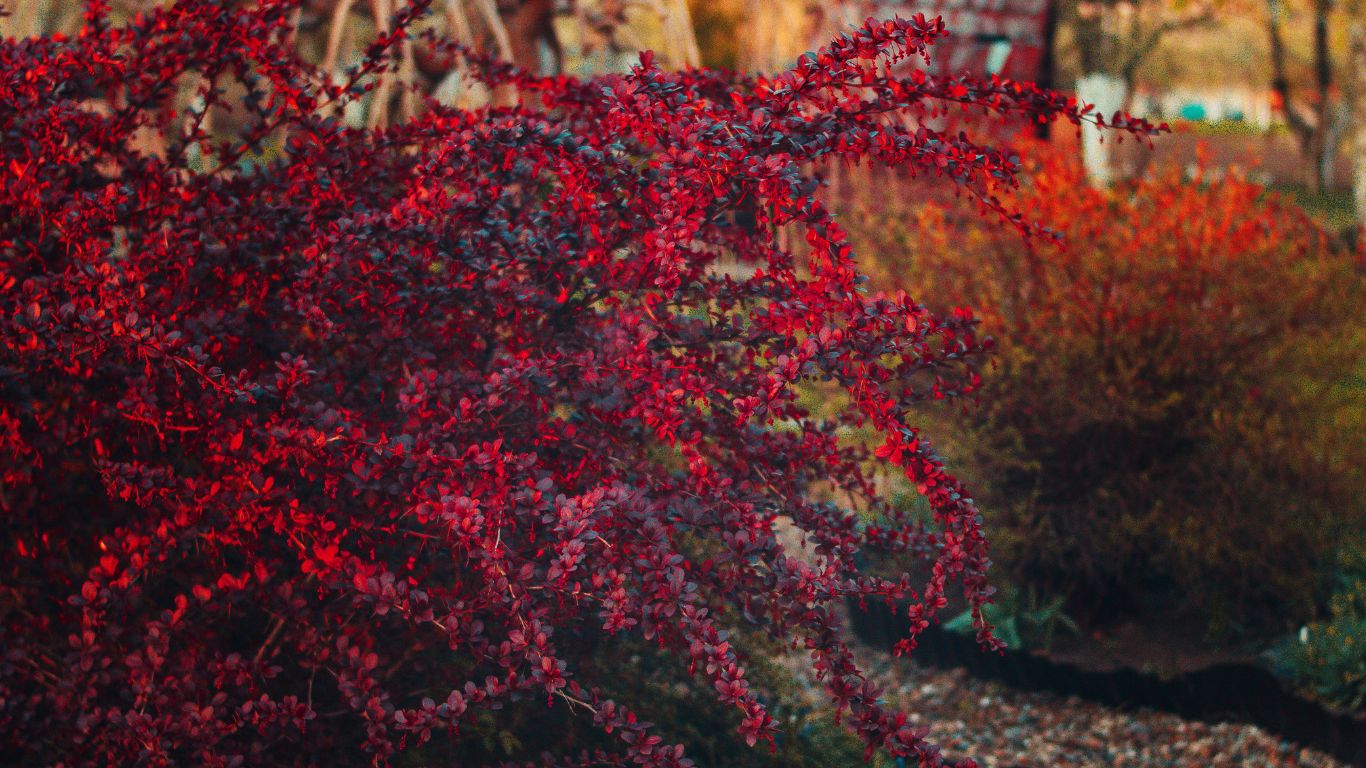Barberry Bush: Plant Spotlight
Sometimes barberry bushes - even thought they're wildly popular - get a bad wrap because of their prickly characteristics, but their distinguishing thorns can actually be an advantage for any garden bed that requires a low maintenance hedge or a hardy, deer repelling plant.
We love using barberries in our garden designs because of their vibrant foliage, low maintenance requirements, versatility, drought tolerance, and pest control abilities. Here's a few good reasons we think you'll love barberries too.
Color Theory
Barberry bushes are known for their colorful foliage, which can range from deep red to bright green or variegated. This adds interest and vibrancy to garden beds, especially when colorful flowers aren't an option or desirable. Barberry bushes come in a vast range or sizes and shapes, making them an excellent choice for border plants, hedges (sorry Boxwood) or standing alone. Their thick, dense composition is perfect for pest prevention, including Lassie who loves digging up your precious plants.

When you lack a green thumb, barberry is your bush!
If you're looking for a pretty display of color and a 'full-looking' garden bed, without a lot of extra effort, then you've found your bush. Because barberries can survive in a variety of soil and light conditions, they're considered practically maintenance-free, so you can pretty much walk away from them after they've been established. Another added benefit is it's incredibly hard to kill off your barberry plant, even in not-so-ideal environments like the scorching sun, wandering deer, diseases or heavy handed pruning. Just sit back and enjoy the beautiful foray of colors, without the maintenance headache.
How To Care For Your Barberry Bush:
Barberry bushes are relatively easy to care for, and with proper maintenance, they can thrive in Iowa's climate. Here are some tips to help you care for your barberry bush in Iowa:
-
Location: Choose a location for your barberry bush that receives full sun to partial shade. Barberry bushes can tolerate a variety of soil types, but they prefer well-draining soil.
-
Watering: Water your barberry bush regularly, especially during dry periods. It is best to water deeply rather than frequently. Avoid getting water on the foliage as this can increase the risk of disease.
-
Fertilizing: Barberry bushes do not require a lot of fertilization, but a yearly application of a balanced fertilizer in the spring can help promote healthy growth.
-
Pruning: Prune your barberry bush in the late winter or early spring before new growth begins. This will help to maintain its shape and keep it from becoming too leggy. Be sure to wear gloves and long sleeves when pruning, as barberry bushes have sharp thorns.
-
Pest and Disease Control: Barberry bushes are generally resistant to pests and diseases. However, they can sometimes be susceptible to rust and powdery mildew. If you notice any signs of these diseases, you can treat them with a fungicide.
In Iowa, the Japanese barberry is the most commonly planted species of barberry. Some of the most popular cultivars of Japanese barberry that we recommend are:
- 'Aurea' - has bright yellow foliage that turns orange-red in the fall.
- 'Crimson Pygmy' - has deep burgundy foliage that retains its color throughout the growing season.
- 'Rose Glow' - has variegated foliage that is pink, white, and green, with pink new growth in the spring.



